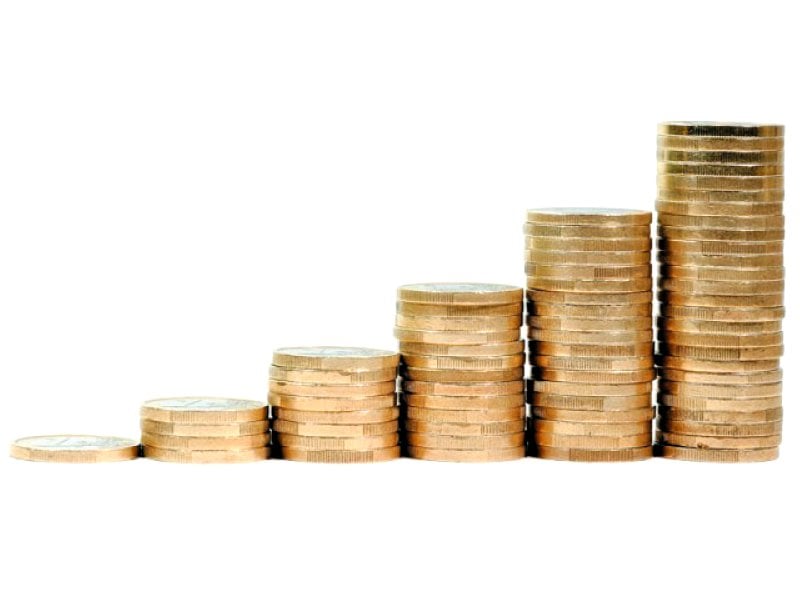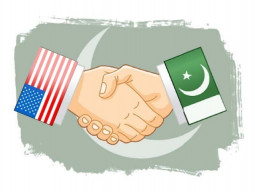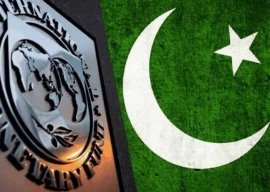
Investors are heading to Pakistan to benefit from a newly-elected, business-friendly government that is rolling out a programme to aid the struggling economy, a recently published Wall Street Journal report said.
In its report on Friday, the American daily said the benchmark index traded in the financial capital Karachi jumped 49.4% last year, ranking among the world’s top performers.
The report said the rally is also part of a broad move by money managers willing to take on high risks in frontier markets across the globe on hopes of juicy returns that beat traditional emerging markets. That bet paid off handsomely in 2013 with countries like Argentina, Venezuela and Vietnam, with histories of volatility and sudden declines, scoring big gains.
The report observed that the biggest catalyst in Pakistan was the election of the PML-N. It is the first time in the nation’s history that an elected government has handed over power to another, raising expectations of improved political stability.
Flows from foreign investors into Pakistan reached $283 million from the beginning of May, the month of the election, to the end of 2013, according to the National Clearing Company of Pakistan. Global investors have also snapped up Pakistani government bonds with yields, which move inversely to prices, falling to 7.54% recently from as high as 11.69% in April on the 10-year bond.
The clearance of almost $5 billion in circular debt, a long-term bailout loan of at least $6.6billion from the International Monetary Fund, and a far reaching privatisation programme which will include the national airline and electricity producers, are all factors the report cites.
All the moves were important given that the country is plagued by electricity shortages, while the oil and gas sector accounts for nearly a third of the benchmark index in Karachi. The largest company on the index, energy firm Oil and Gas Development Company (OGDCL) saw share prices grow 43.5% last year.
“Given that the general impression of the new government has been corporate friendly, it is a very strong factor that has made people more optimistic about Pakistan,” said Mattias Martinsson, chief investment officer and partner at fund company Tundra Fonderin Stockholm, which runs a $30-million Pakistan fund.
For all the gains, however, the size is small with the market capitalisation of the companies listed in Karachi at around $52 billion, according to securities firm Foundation Securities Research. The number pales in comparison to neighbouring India where the companies on the Bombay Stock Exchange are valued at around $1.1 trillion.
“Pakistan, as a market, has very many companies that are trading below their fair value, but as it goes you get distracted by other more important markets,” said Arnout van Rijn, Chief Investment Officer at Robeco Asia Pacific in Hong Kong, which manages the $1.2-billion Robeco Asia-Pacific Equities fund.
The market remains cheap even after the strong run-up earlier this year, currently trading at over nine times trailing 12-month earnings – a common valuation measure used by stock analysts.
“Pakistan has a fairly diverse economy with a large and young population that needs to be fed and supplied basic infrastructure such as electricity,” said Caglar Somek, global portfolio manager at Caravel Management in New York, which manages around $650 million.
“If you find the companies that supply those basic needs, growing at double digit with high profitability, you can buy them at valuations that are on average 30% to 40% cheaper than their emerging market peers,” said Somek.
The market has been up since the end of 2008, however, with shares soaring 329% near the end of 2013 − despite the country being hit by terrorism, the economy nose-diving, and Karachi suffering law and order situation during that period.
“When you have to deal in this kind of environment, I think you have to be extremely good at management to survive,” said Thomas Vester, fund manager at Lloyd George Management, who runs the firm’s frontier market investments, and manages assets worth $656 million as of October 31, 2013.
Published in The Express Tribune, January 5th, 2014.
Like Business on Facebook, follow @TribuneBiz on Twitter to stay informed and join in the conversation.


















COMMENTS
Comments are moderated and generally will be posted if they are on-topic and not abusive.
For more information, please see our Comments FAQ